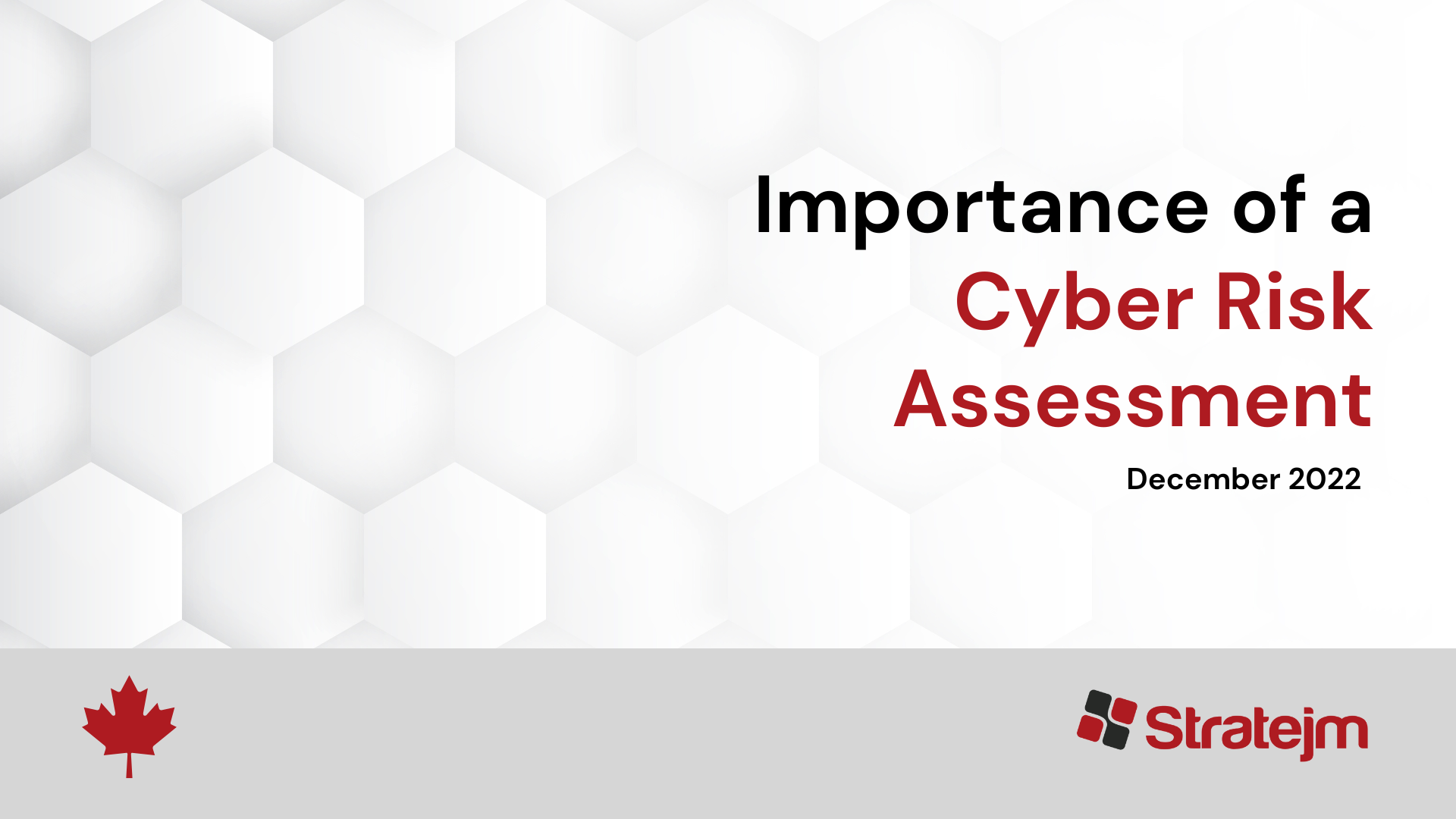
The Importance of a Cybersecurity Risk Assessment
Within many organizations, cybersecurity is something that is often overlooked – It is common to see organizations investing in sophisticated cybersecurity tools only to just… leave it there after implementation has been completed.
In reality, the cyber-threat landscape is rapidly evolving and your data protection efforts therefore need to be updated and monitored accordingly in order to be effective.
Organizations will naturally change over time, which means that their security system needs to be scalable and flexible to meet the enterprise’s evolving needs.
The best way to keep an accurate and up-to-date picture of your current security environment is by conducting regular cybersecurity risk assessments.
They are the only way to know for sure whether your current system is doing an adequate job protecting your assets.
What is a Security Risk Assessment?
A security risk assessment is a process that evaluates the vulnerabilities and threats that an organization is facing in order to provide an accurate picture of the identified risks and the potential damage they might cause. It should also include recommendations for mitigating any identified risks.
Carrying out a cyber risk assessment provides a holistic view of an organizations network security from the attacker’s perspective. It is an invaluable tool that will serve as the basis of a risk management strategy and will aid managers in tackling complex risk assessments.
Main Benefits of a Cybersecurity Risk Assessment
1. Identifies Security Vulnerabilities
One of the main benefits of a cybersecurity risk assessment is that it will help you identify the internal and external risks that are relevant to your system.
This is critical as it provides visibility into the individual components of your security system and identifies which areas are weak and need improving.
This information will ultimately guide your future security investments and provide a guideline for how to move forward.
2. Documents & Reviews Security Controls
A cybersecurity risk assessment will provide insight into your current security controls while evaluating how efficiently they operate and how they can be upgraded.
This information can then be used to prioritize critical areas of attention that should be dealt with first.
3. Meet Industry Compliance & Regulations
Many are surprised to find out that they risk being hit with massive fees and fines for failing to comply with government-mandated requirements & regulations.
Cybersecurity risk assessments will, therefore, identify any areas where your organization is failing to meet regulations, ensuring that any penalties are avoided.
How to Complete a Cybersecurity Risk Assessment
1. Determine the Scope of the Risk Assessment Process
Before categorizing and quantifying every digital asset within your organization, it is recommended that you take the time to determine what will actually be in the scope of your assessment.
While an organization-wide risk assessment is typically ideal, it might be more realistic to conduct an assessment on a specific business unit, or a specific area within your organization. Make sure to have the full support and understanding from key stakeholders in your organization as it is imperative that everyone clearly understands what is being identified and assessed.
Additionally, it pays to make sure that everyone is familiar with the terminology and methodology that will be used in the risk assessment report.
Prior to conducting a cyber security risk assessment, standards like ISO/IEC 27001 and frameworks such as NIST SP 800-37 and ISO/IEC TS 27110, can help guide organizations on how to evaluate information security risks in a structured manner and ensure mitigating controls are appropriate and effective.
2. Identify Vulnerabilities and Assets
This step involves identifying all the critical assets that are involved within an organization’s network and carefully documenting the sensitive data that is created, stored and transmitted by these assets.
While identifying assets, it is important to also consider which ones are most important. That is, what are the most business critical assets that must be protected in the event of cyber attacks?
Creating a network architecture diagram from the asset inventory list is one way to visualize the interconnectivity and communication paths between assets and processes as well as entry points into the network.
After business critical assets and data are identified, the risk assessment should then look at identifying all available cyber threats that are relevant to your organization. It is recommended that companies make use of known asset libraries like MITRE ATT&CK and Cyber Threat Alliance.
3. Analyze Risks and Determine Potential Impact
Once all available assets and threats are identified, the next step is to then determine which vulnerabilities pose the greatest threat to current business objectives.
To do this, security teams must consider the impact of a threat and the potential of it occurring.
In the context of a cyber risk assessment, Risk likelihood is the probability that a given threat is capable of exploiting a given vulnerability. This should be determined based on the discoverability, exploitability and reproducibility of threats and vulnerabilities rather than historical occurrences.
Impact refers to the magnitude of harm to the organization resulting from the consequences of a threat exploiting a vulnerability.
4. Prioritize Risks & Identify Risk Mitigation Process
With all of the potential risks now identified, it is now important to prioritize each risk based on their potential impact to the organization. From there, you should allocate the necessary time and resources towards mitigating each of those risks effectively.
Any risk that is above the organization’s tolerance level should be prioritized for remediation. Typically there are three different ways to do so:
- Avoid – If a certain activity is too risky, the best course of action may be to simply discontinue doing so
- Transfer – Outsourcing certain components of the risk to third parties (i.e. partnering with a security provider, purchasing cyber insurance)
- Mitigate – Deploying security controls to limit cyber risk exposure. Responsibility for implementing the measures to reduce unacceptably high risks should be assigned to the appropriate team.
Comprehensive Cybersecurity Risk Assessment with Stratejm
The easiest way to get a comprehensive view of your organization’s security posture is by partnering with an IT security services provider like Stratejm.
We can provide all the tools and expertise necessary to diagnose any gaps in your network, along with the tools and know-how to mitigate them.
We provide comprehensive, turnkey, enterprise-grade security tools without the need for any hardware or software commitments.

